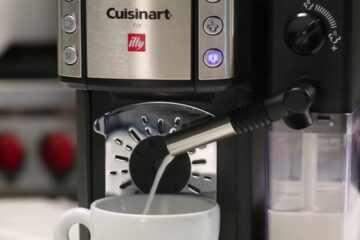Cortado vs Cappuccino: The Ultimate Guide

The cortado and cappuccino are two iconic espresso-based drinks that coffee lovers adore, yet they offer distinct experiences. From their origins to their preparation, flavor, and texture, these beverages cater to different tastes and preferences. This detailed guide breaks down the differences between a cortado and a cappuccino, helping you decide which one suits your coffee cravings. Whether you’re a casual drinker or a coffee aficionado, read on to discover everything you need to know about these beloved drinks.
What is a Cortado?
A cortado is a small, espresso-based drink hailing from Spain, particularly the Basque region. Its name comes from the Spanish word cortar, meaning “to cut,” as the milk “cuts” through the espresso’s intensity. The cortado strikes a perfect balance between bold coffee and smooth milk, making it a favorite for those who want a quick, flavorful sip.
Key Features of a Cortado
- Ratio: 1:1 or 1:2 espresso to steamed milk (e.g., 1 oz espresso to 1–2 oz milk).
- Size: Compact, served in a 4–6 oz glass or cup.
- Milk: Steamed milk with minimal or no foam for a velvety texture.
- Flavor: Strong espresso taste softened by creamy milk.
- Presentation: Often served in a Gibraltar glass (4.5 oz) in specialty cafés.
Cortado Origins
Born in Spanish and Latin American coffee culture, the cortado is a practical choice for espresso enthusiasts who want a touch of milk without diluting the coffee’s boldness. Its simplicity has made it a global hit, especially in third-wave coffee scenes across the U.S., Europe, and Australia.
What is a Cappuccino?
A cappuccino is a timeless Italian coffee drink known for its layered structure and frothy top. A staple in cafés worldwide, it’s a symbol of Italian coffee culture, combining espresso, steamed milk, and a thick layer of foam for a rich, textured experience.
Key Features of a Cappuccino
- Ratio: Equal parts espresso, steamed milk, and milk foam (1:1:1, e.g., 2 oz each).
- Size: Typically 5–6 oz, though larger versions are common in chain coffee shops.
- Milk: Equal parts steamed milk and airy foam for a creamy, light texture.
- Flavor: Balanced espresso with sweet, creamy milk and a frothy finish.
- Presentation: Served in a ceramic cup, often with cocoa or cinnamon dusting.
Cappuccino Origins
Originating in Italy, the cappuccino’s name is inspired by the Capuchin monks’ brown robes, mirroring the drink’s hue. Popularized in the 20th century with espresso machines, it’s now a global favorite, especially in countries where coffee chains serve larger, embellished versions.
Cortado vs Cappuccino: How They Differ
Both drinks start with espresso and incorporate milk, but their preparation, texture, and vibe set them apart. Here’s a detailed comparison to clarify their differences.
1. Milk Ratio and Texture
- Cortado: Uses a small amount of steamed milk (1:1 or 1:2 with espresso) and little to no foam, resulting in a smooth, velvety texture that highlights the espresso.
- Cappuccino: Combines equal parts espresso, steamed milk, and thick foam (1:1:1), creating a creamier, airier texture with a frothy top.
2. Size and Volume
- Cortado: Smaller, typically 4–6 oz, ideal for a quick, concentrated coffee.
- Cappuccino: Slightly larger, usually 5–6 oz traditionally, though chain shops may offer 8–12 oz versions.
3. Flavor Profile
- Cortado: Espresso-forward with a bold, slightly softened taste due to minimal milk.
- Cappuccino: More balanced, with steamed milk and foam adding sweetness and creaminess to complement the espresso.
4. Foam Factor
- Cortado: Minimal or no foam, focusing on a uniform, silky texture.
- Cappuccino: Defined by its thick, frothy foam layer, adding a luxurious element.
5. Cultural Vibe
- Cortado: Rooted in Spanish and Latin American traditions, it’s a no-nonsense drink for espresso lovers.
- Cappuccino: A cornerstone of Italian coffee culture, often a morning ritual, rarely consumed after noon in Italy.
6. Serving Style
- Cortado: Served in a small glass (e.g., Gibraltar) to highlight its compact size and layers.
- Cappuccino: Presented in a ceramic cup to retain heat and showcase the foam.
Nutritional Breakdown: Cortado vs Cappuccino
For those watching their diet, the nutritional content of these drinks varies based on milk type and size. Here’s a comparison (using 2% cow’s milk, no sweeteners):
| Drink | Size (oz) | Calories | Fat (g) | Protein (g) | Carbs (g) |
|---|---|---|---|---|---|
| Cortado | 4 | ~50–60 | 2–3 | 2–3 | 4–5 |
| Cappuccino | 6 | ~80–100 | 3–4 | 4–5 | 6–8 |
Notes:
- Cortado: Fewer calories due to its smaller size and less milk.
- Cappuccino: Higher calories from more milk and foam.
- Milk Alternatives: Oat, almond, or soy milk can change the profile. Oat milk adds carbs; almond milk lowers calories.
- Sweeteners: Sugar or syrups (common in chain cappuccinos) increase calories and carbs.
Which is Stronger?
“Strength” in coffee refers to the espresso’s intensity and prominence in the drink.
- Cortado: Feels stronger due to its higher espresso-to-milk ratio (1:1 or 1:2). The minimal milk lets the espresso’s bold flavor dominate.
- Cappuccino: Seems less intense because the equal parts of milk and foam (1:1:1) soften the espresso’s bitterness.
Verdict: The cortado is stronger for espresso purists, while the cappuccino offers a milder, milkier experience.
How to Make a Cortado at Home
Crafting a cortado is straightforward with an espresso machine or moka pot. Here’s how:
Ingredients
- 1–2 shots (1–2 oz) espresso
- 1–2 oz steamed milk (whole, 2%, or plant-based)
- Optional: Sugar to taste
Equipment
- Espresso machine or moka pot
- Milk frother or steam wand
- Small glass or cup (4–6 oz)
Steps
- Brew Espresso: Pull 1–2 shots of espresso.
- Steam Milk: Heat 1–2 oz of milk until hot, aiming for a smooth texture with minimal foam.
- Combine: Pour the milk into the espresso (1:1 or 1:2 ratio). Stir if desired.
- Serve: Pour into a small glass and sip immediately.
Tip: Use freshly roasted beans and grind them just before brewing for optimal flavor.
How to Make a Cappuccino at Home
A cappuccino requires careful milk frothing but is doable at home. Here’s the process:
Ingredients
- 1–2 shots (1–2 oz) espresso
- 2 oz steamed milk
- 2 oz milk foam
- Optional: Cocoa powder or cinnamon for dusting
Equipment
- Espresso machine or moka pot
- Milk frother or steam wand
- Ceramic cup (5–6 oz)
Steps
- Brew Espresso: Pull 1–2 shots and pour into a ceramic cup.
- Steam Milk: Heat 4 oz of milk, frothing half (2 oz) into thick foam and keeping the other half (2 oz) smooth.
- Layer: Pour the steamed milk over the espresso, then spoon or pour the foam on top.
- Garnish: Dust with cocoa or cinnamon, if desired.
- Serve: Enjoy while the foam is fresh.
Tip: Practice frothing for creamy microfoam to nail the cappuccino’s texture.
Cortado or Cappuccino: Which to Choose?
Your choice depends on your taste, mood, and dietary preferences. Here’s a quick guide:
Pick a Cortado If:
- You love bold, espresso-heavy coffee.
- You want a small, quick drink with minimal milk.
- You prefer a smooth texture without foam.
- You’re keeping calories low.
Pick a Cappuccino If:
- You enjoy a creamy, balanced coffee with froth.
- You want a larger, more indulgent drink.
- You savor the ritual of a layered coffee.
- You don’t mind extra calories.
Cortado and Cappuccino in Coffee Culture
Each drink holds a unique place in coffee culture:
- Cortado: A staple in Spain and Latin America, it’s a practical choice for espresso fans, often enjoyed quickly at the counter. Its rise in third-wave cafés highlights its minimalist appeal.
- Cappuccino: Synonymous with Italian elegance, it’s a morning ritual in Italy and a global icon. Its frothy presentation makes it a favorite for latte art and social media.
The cortado vs cappuccino debate comes down to personal taste. The cortado delivers a bold, compact punch for espresso lovers, while the cappuccino offers a creamy, frothy experience for those who enjoy balance and texture. Whether you’re savoring a cortado in a cozy Spanish café or a cappuccino at an Italian espresso bar, both drinks showcase coffee’s versatility.
Try both at your local café or experiment with our home recipes to find your favorite. Are you team cortado or team cappuccino? Share your thoughts below!















